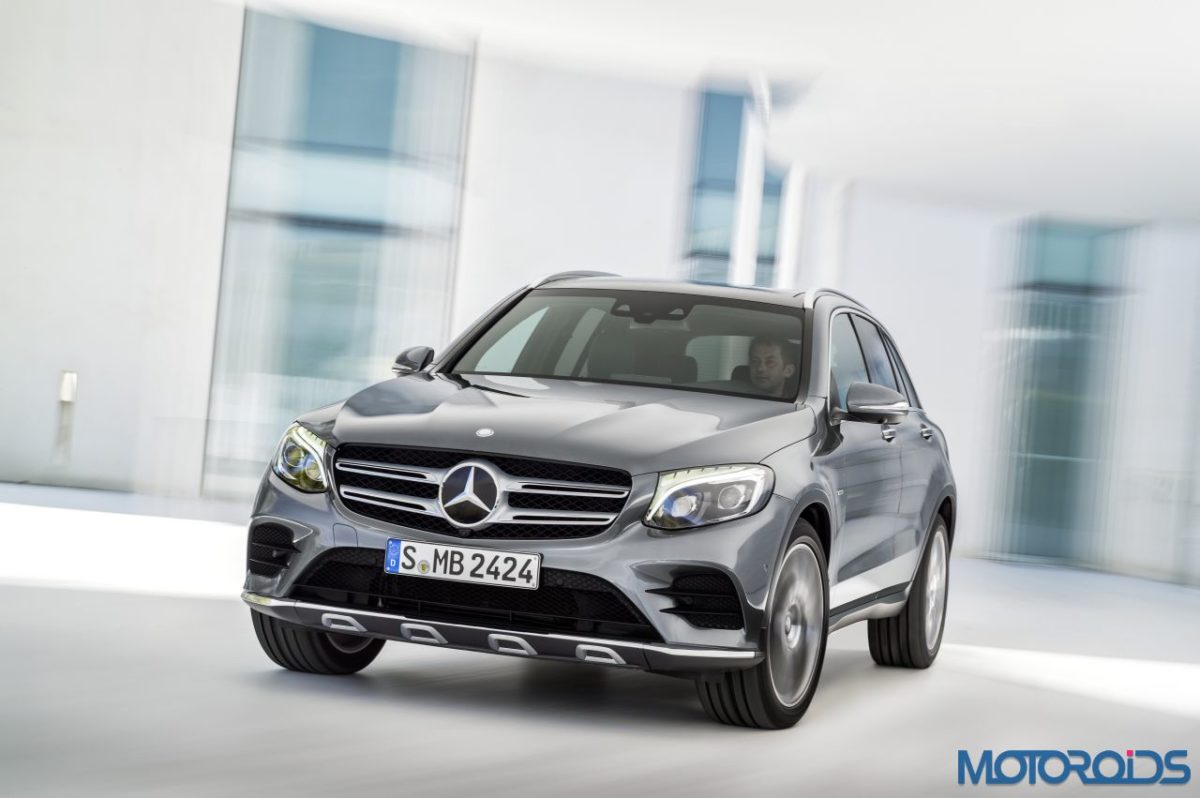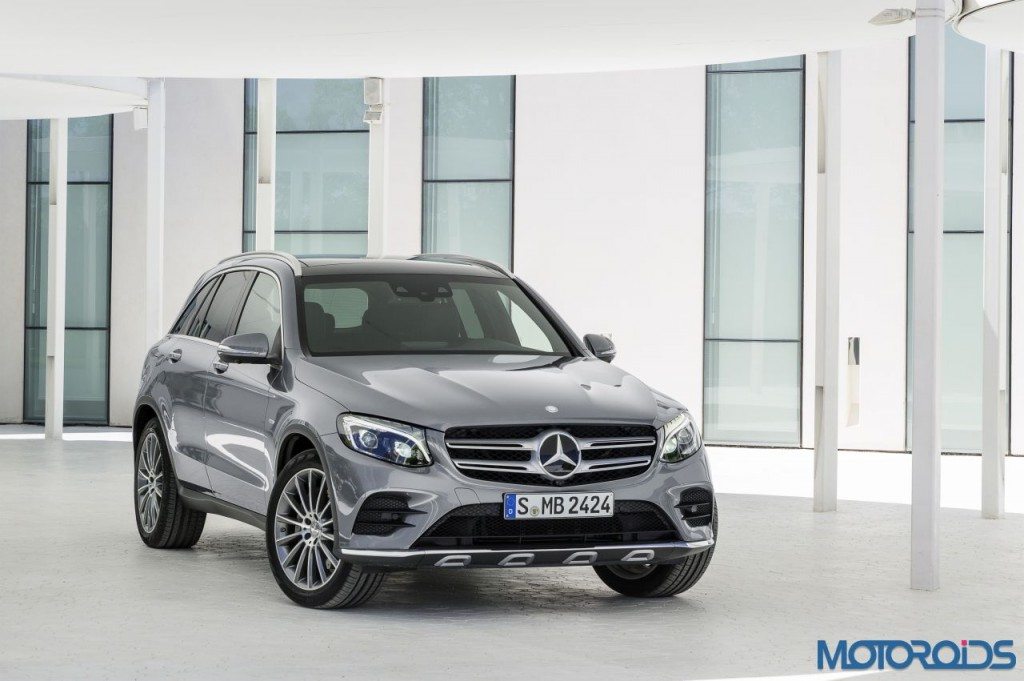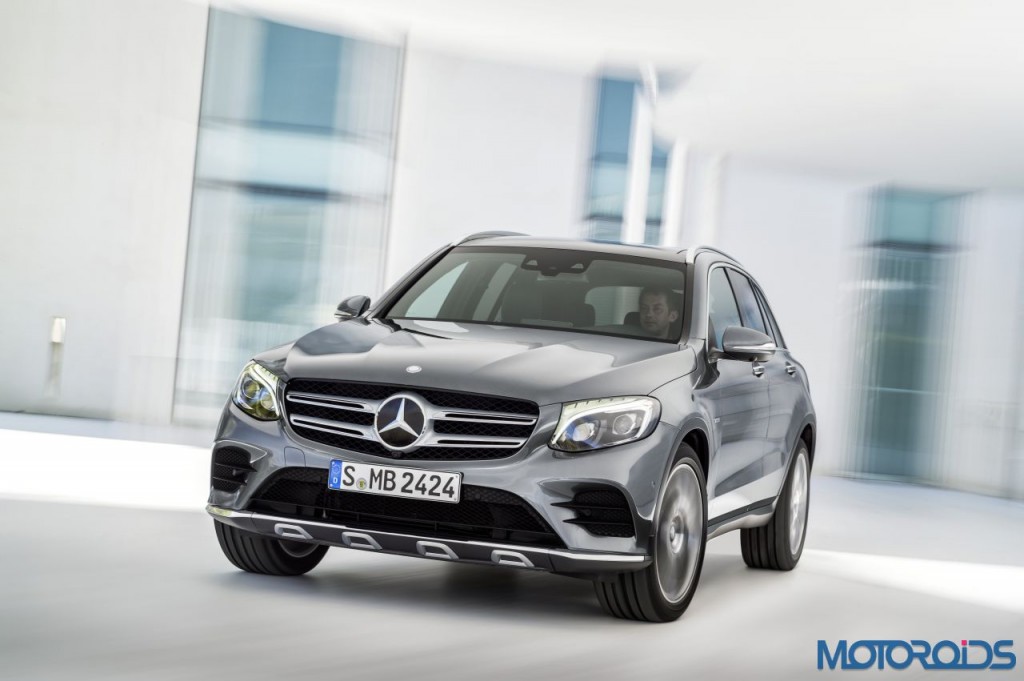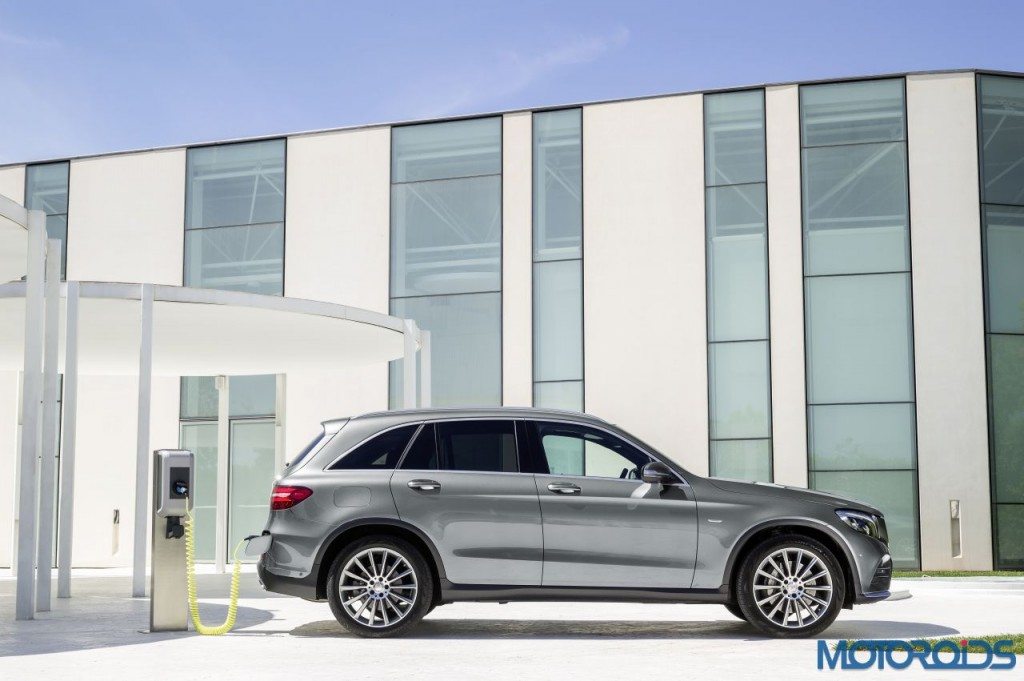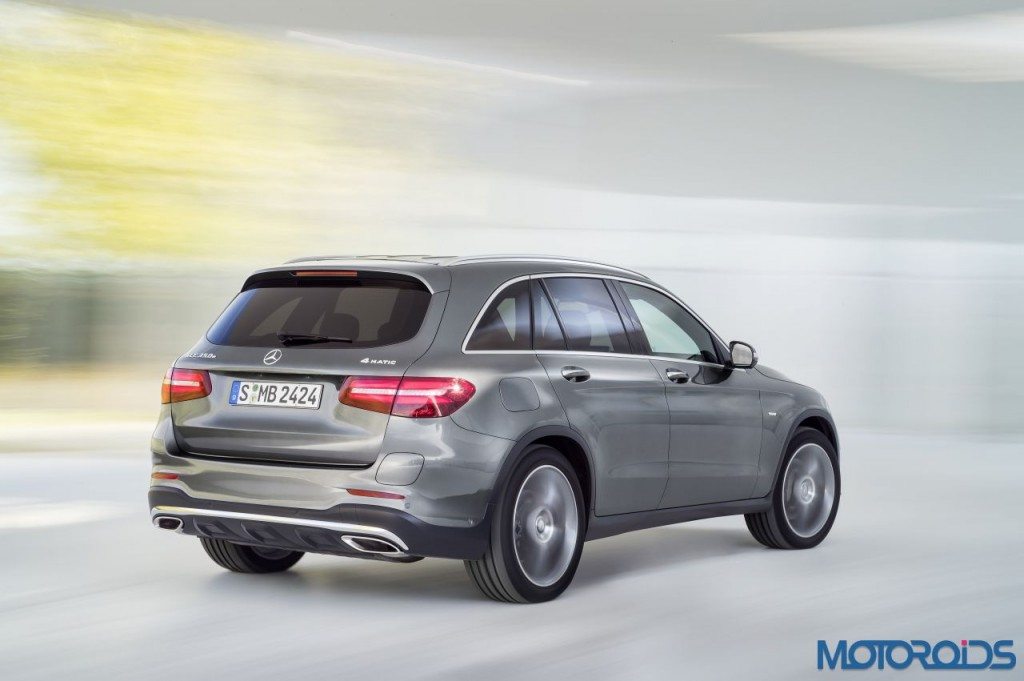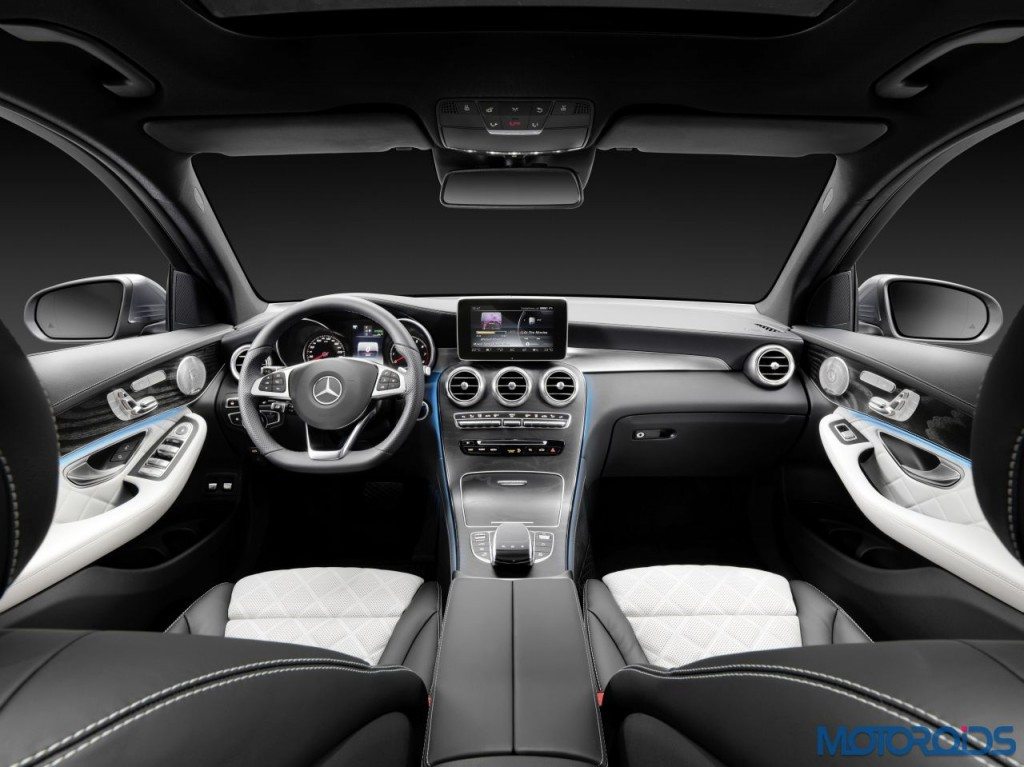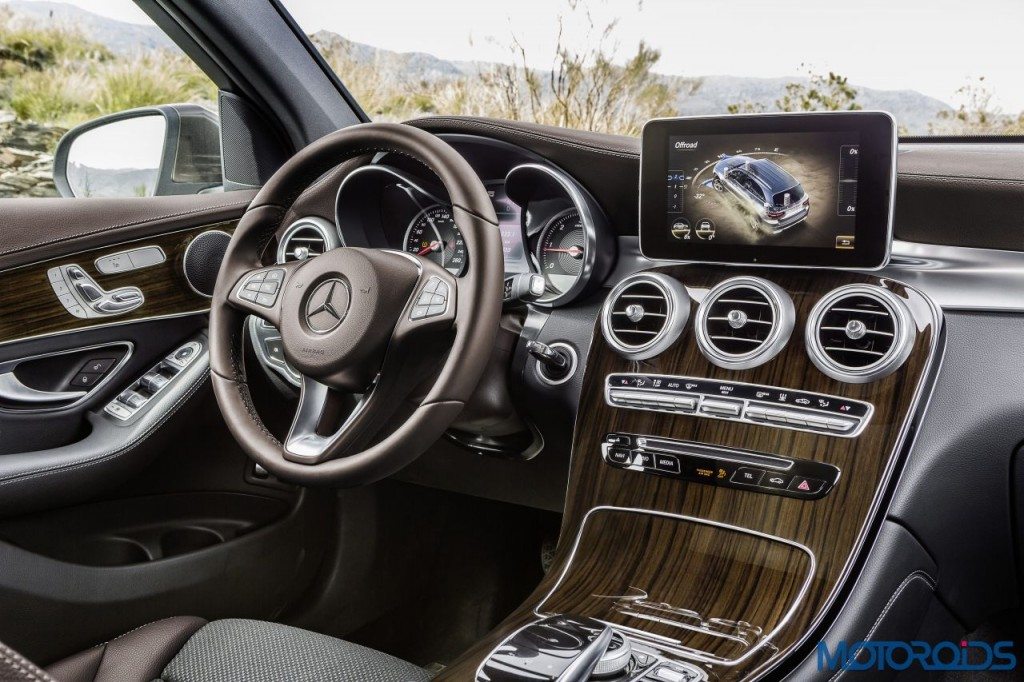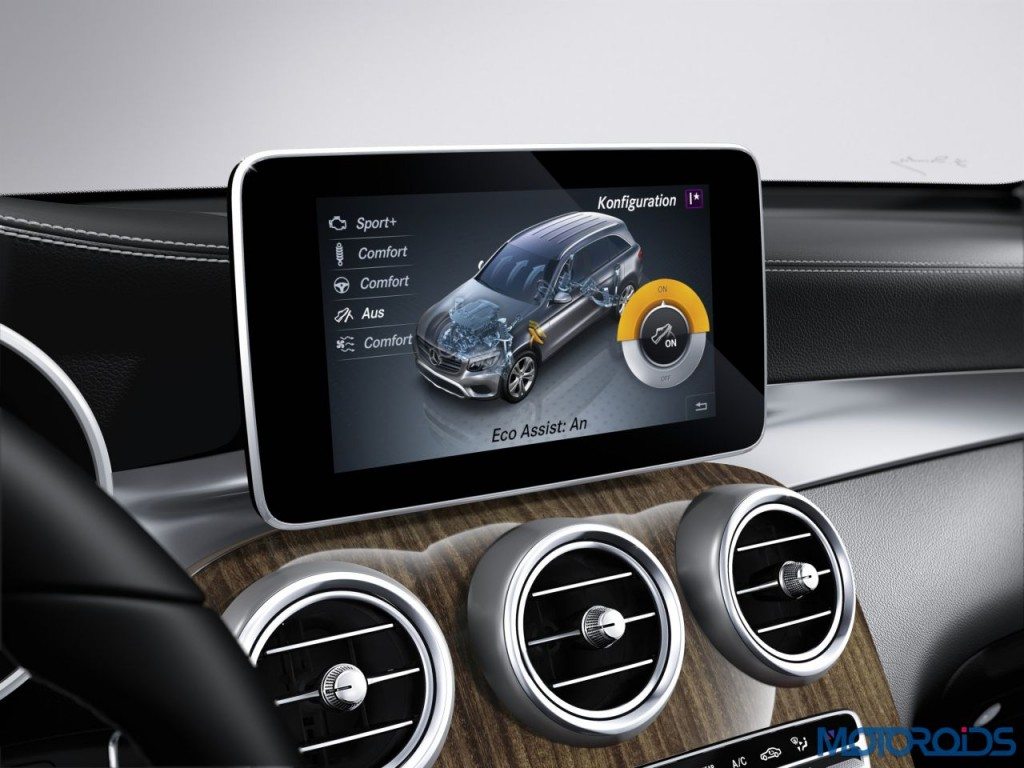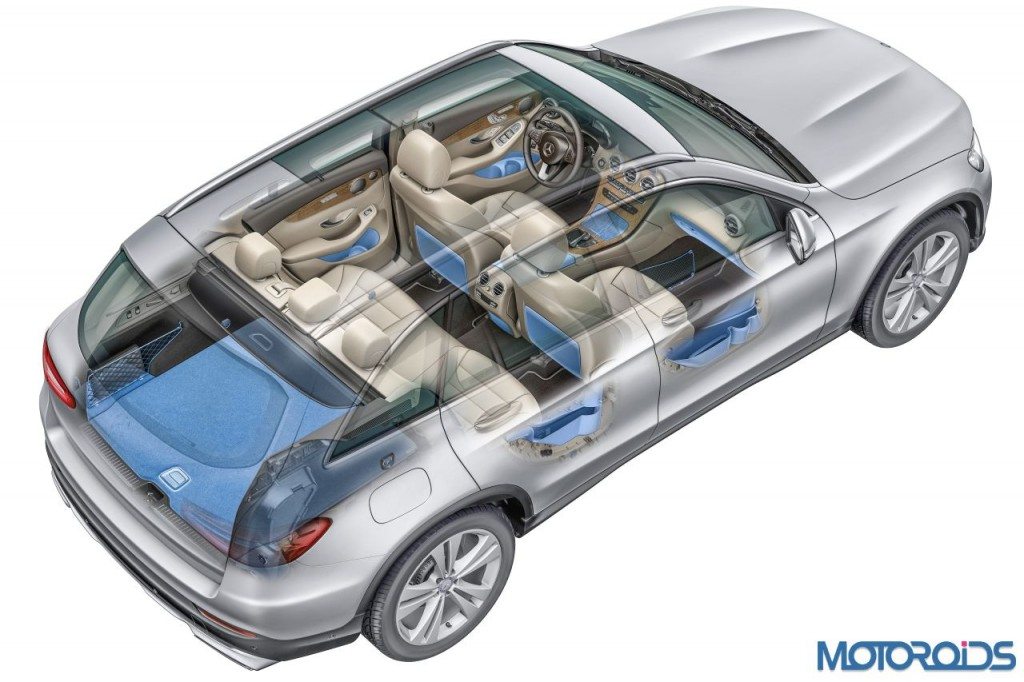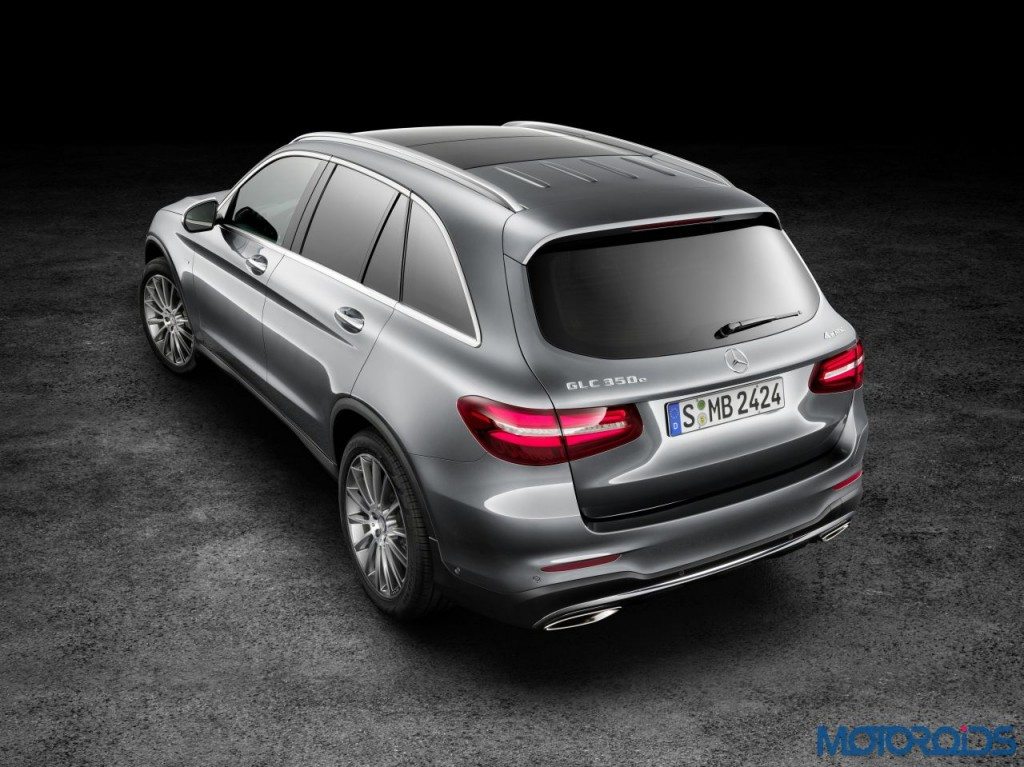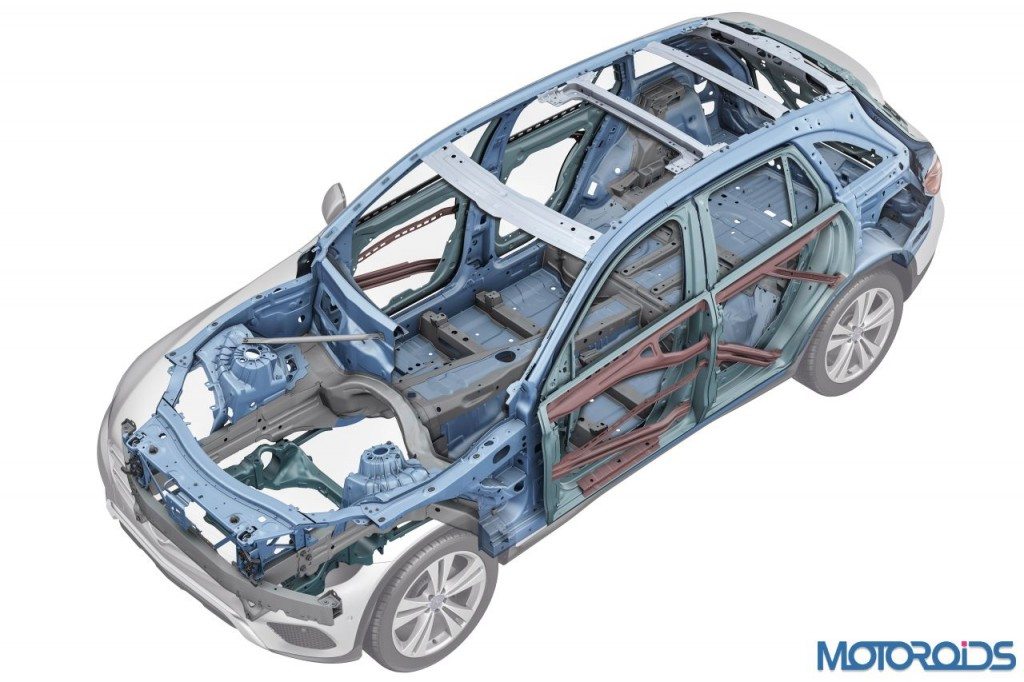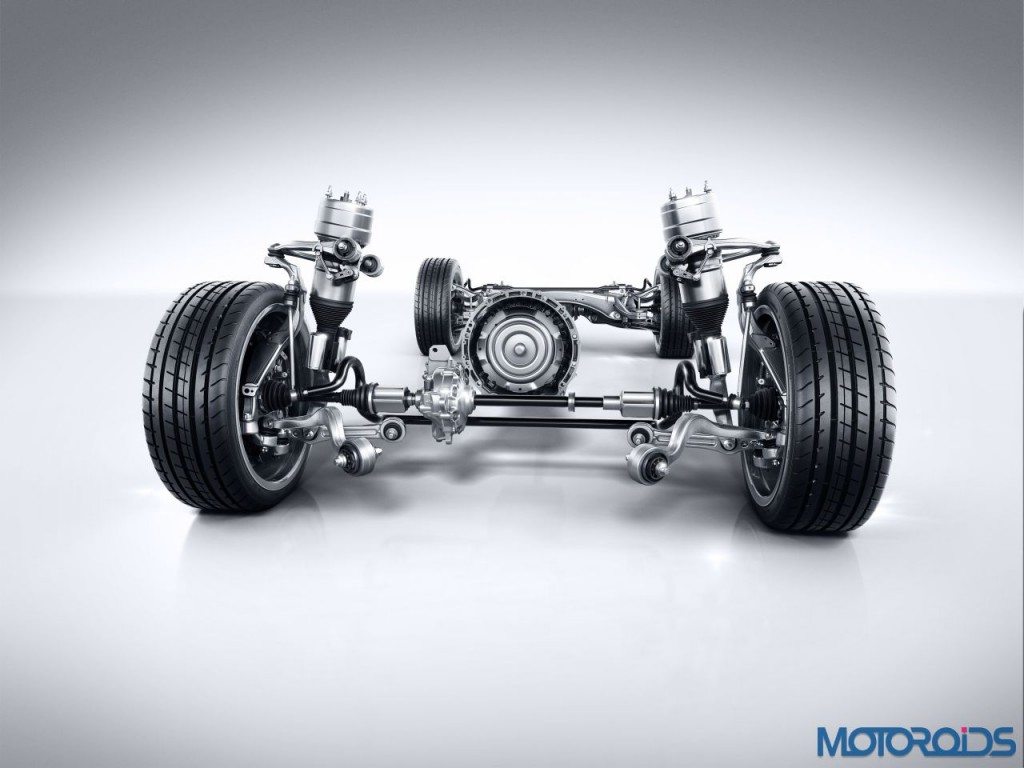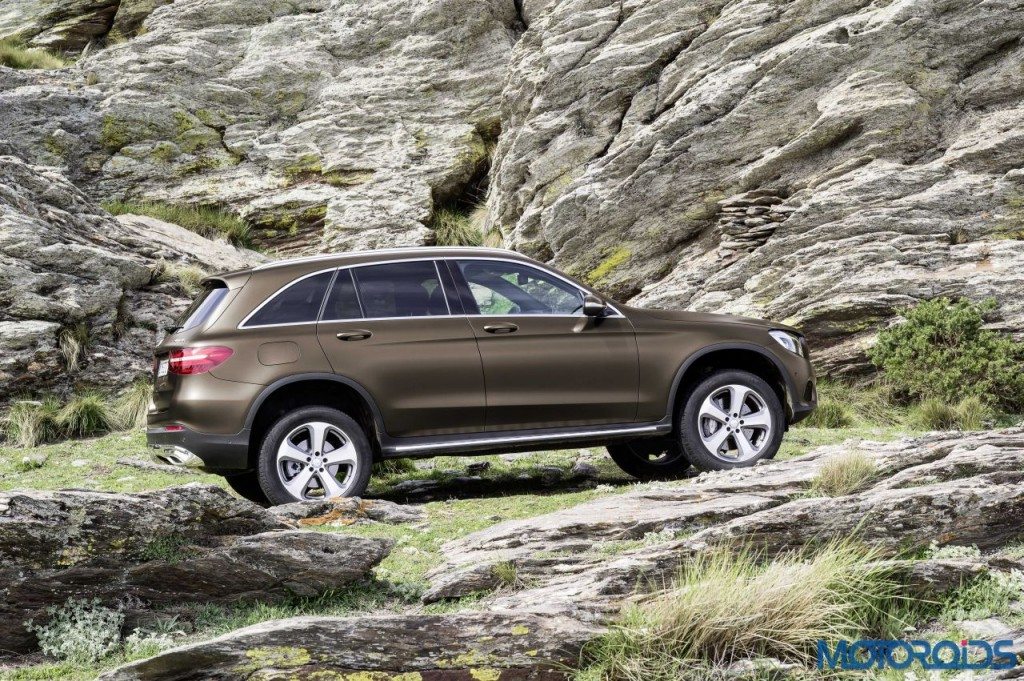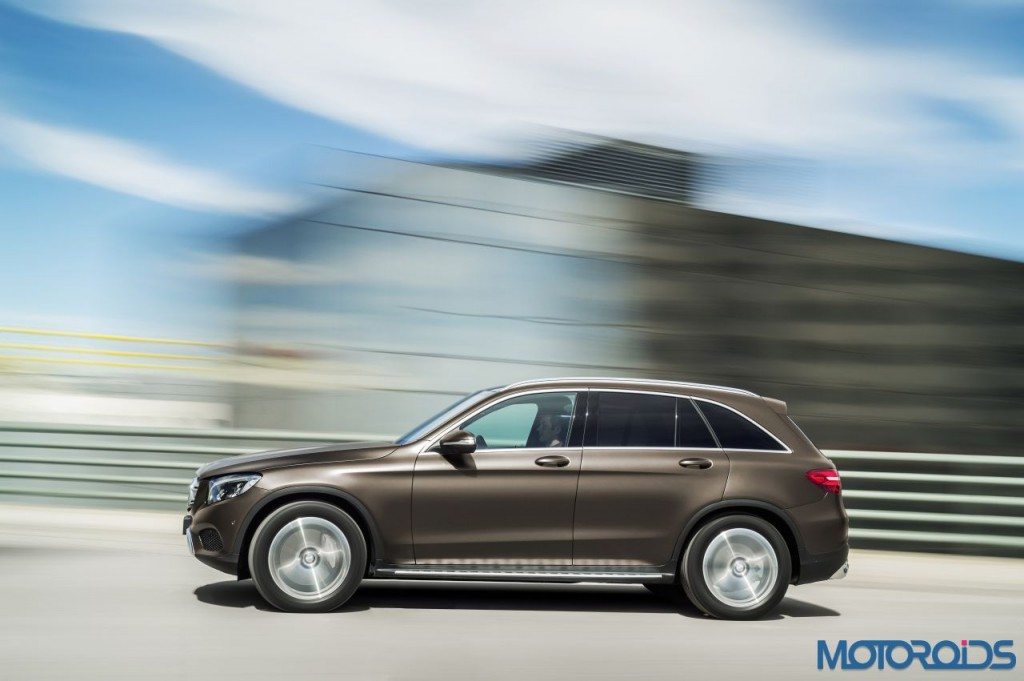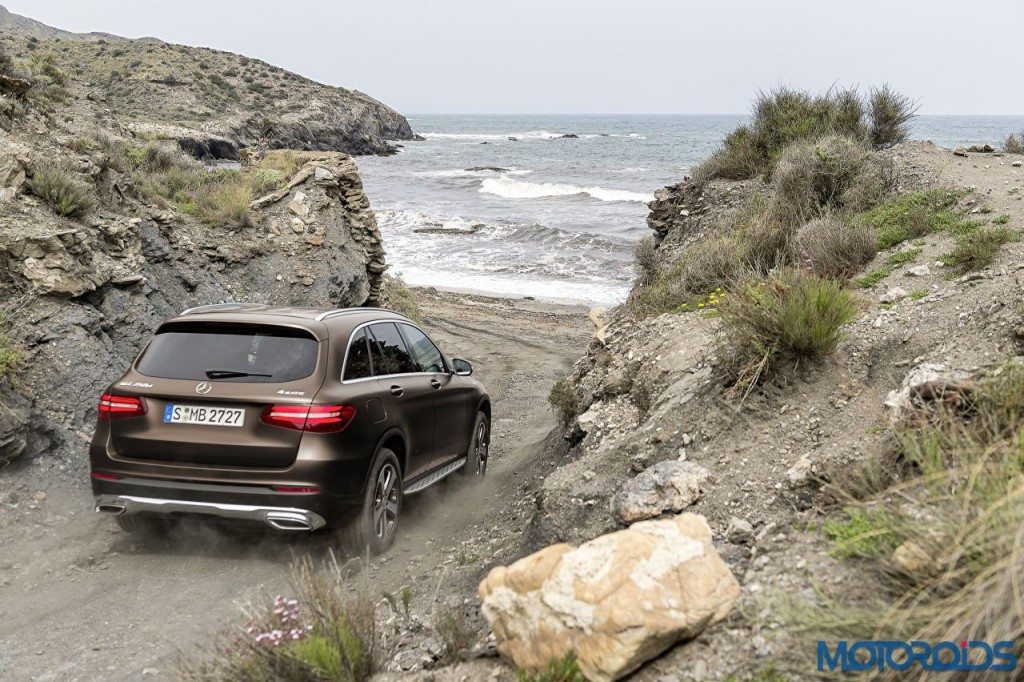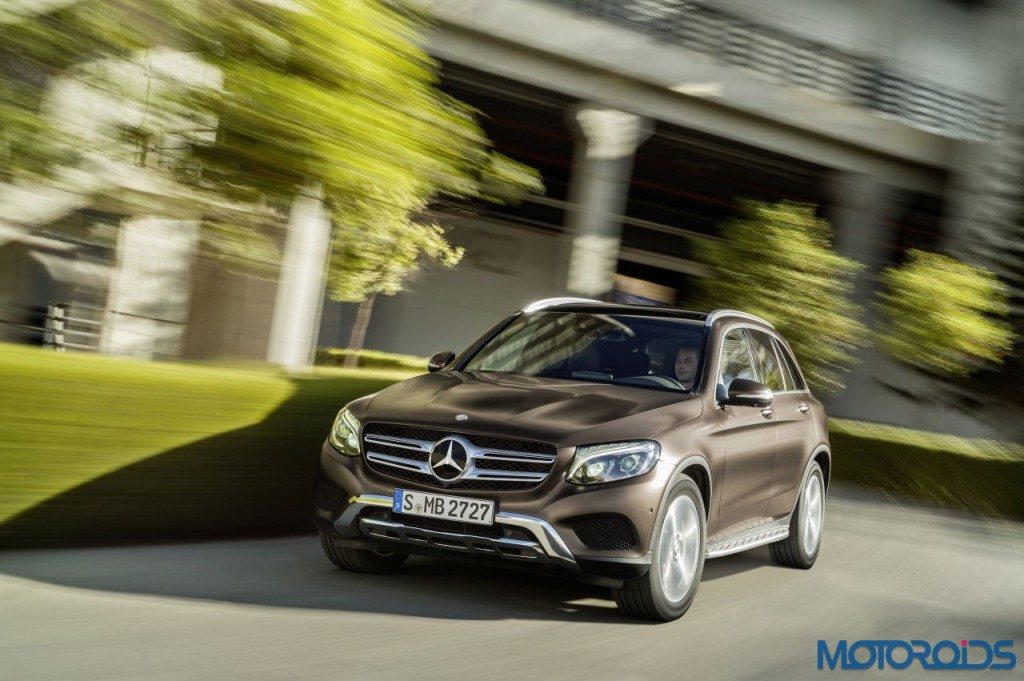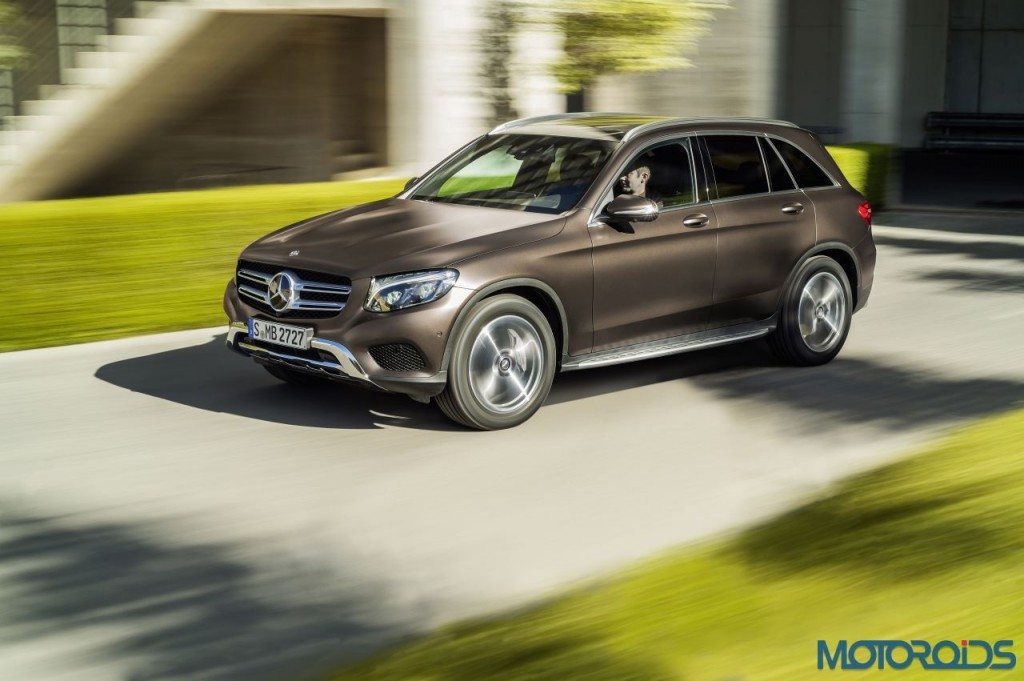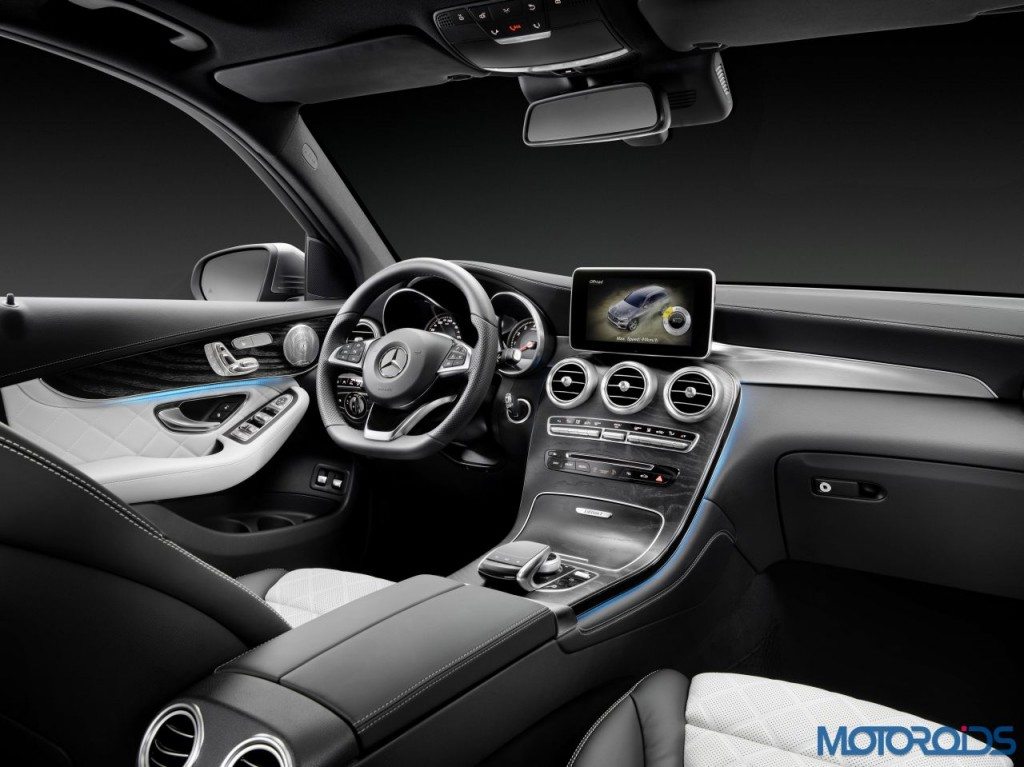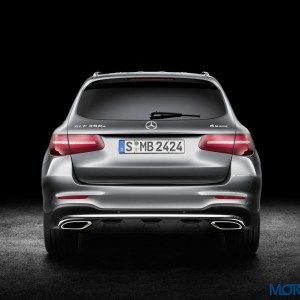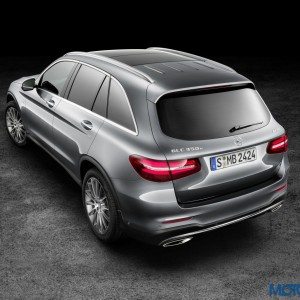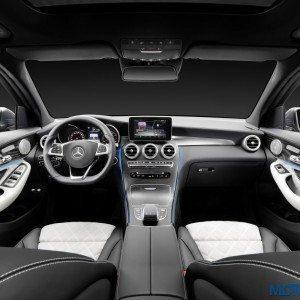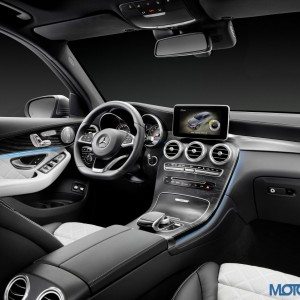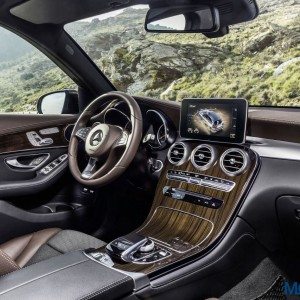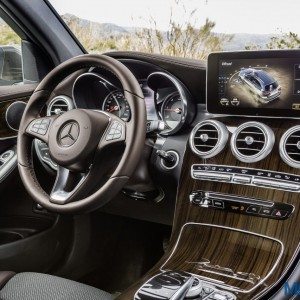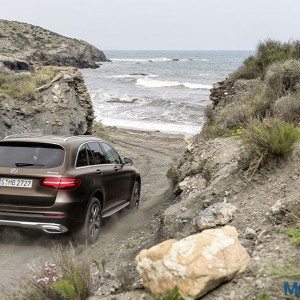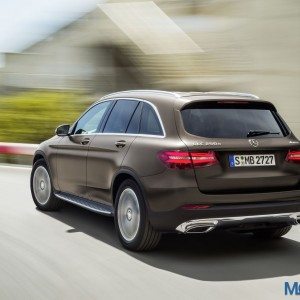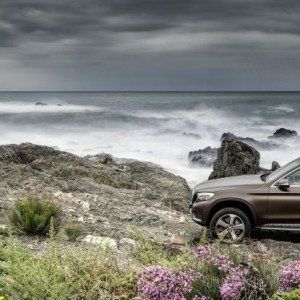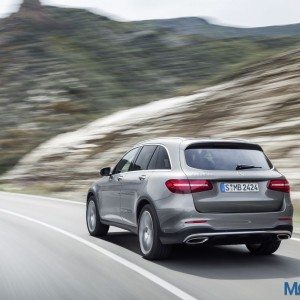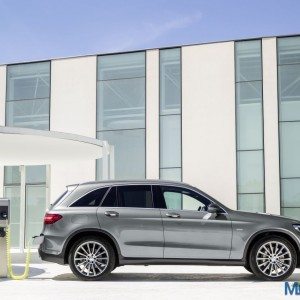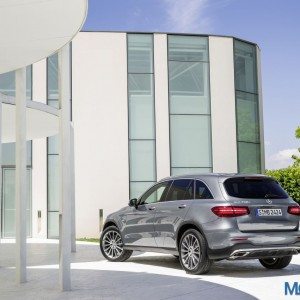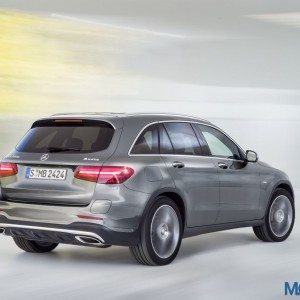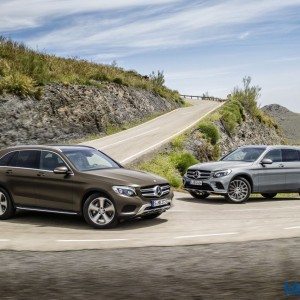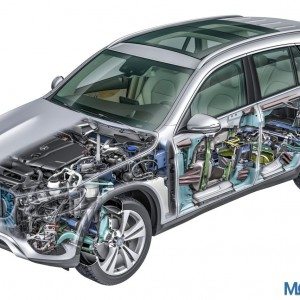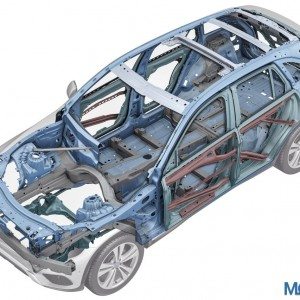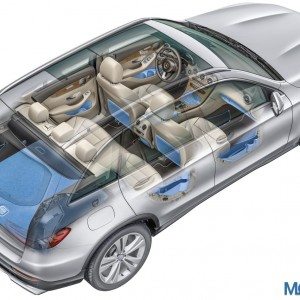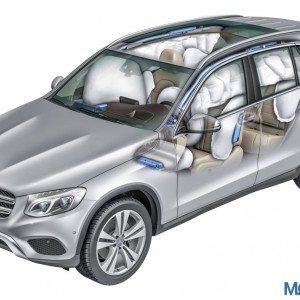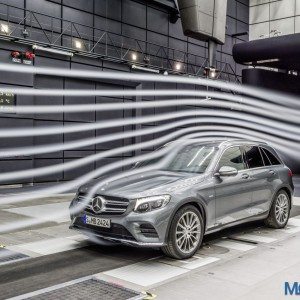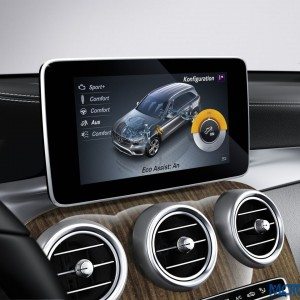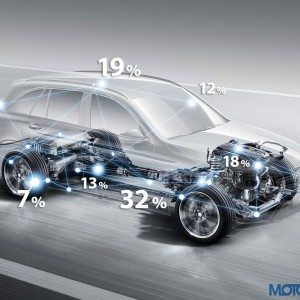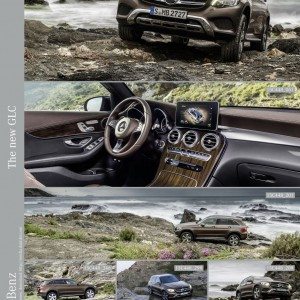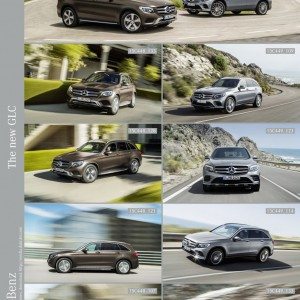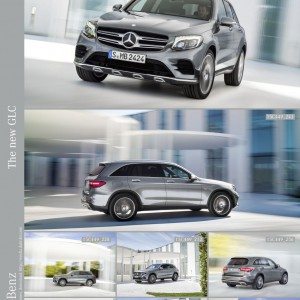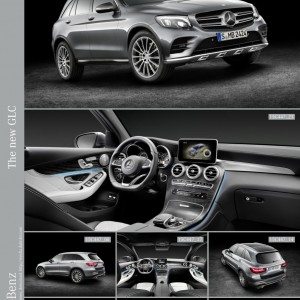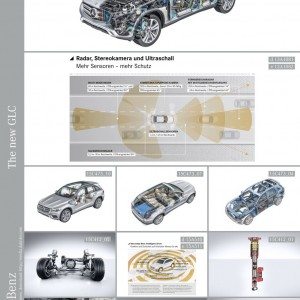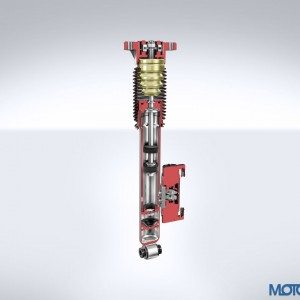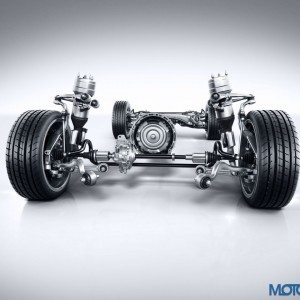The second generation of the mid-range SUV from Mercedes-Benz goes by the name of GLC and replaces its predecessor – the GLK. Launched yesterday by Czech model, television host, and philanthropist Petra Nemcova at the Hugo Boss factory in Germany, the all-new GLC will be based on the current generation C-Class (W205) sedan’s MRA platform.
“Our new GLC represents a further, systematic step in the implementation of our successful SUV philosophy. It combines the ultimate in driving comfort with a sporty touch, impresses on the road and – more than ever – off it as well, and appeals to the eye with the new design and equipment line,” says Thomas Weber, member of the Management Board of Daimler AG and responsible for Group Research and Mercedes-Benz Cars Development.
Visually, the GLC picks up where the GLC Coupé show car concept left, and demonstrates the familiar Mercedes-Benz family SUV appearance. According to Mercedes, the design philosophy behind the new GLC essentially “favours sensual purity and a modern aesthetic over the classic off-road look.”
Characterising the front is three-dimensional radiator grille with a twin louvre and a centrally positioned brand star. The headlamps are a nod to the GLE/GLE Coupé, and are optionally available as LED High Performance lamps. The bumpers with integrated under guard come in three variants: in addition to the base version there is a version optimised for off-road use with a larger angle of approach/departure, plus a sporty AMG variant.
The side view showcases the almost coupé-like greenhouse, while the wheelbase has been increased by 118 millimetres over its predecessor. Matt black cladding in the wings, wheels up to a size of 50.8 cm (20 inches) and the optional side running board hint at the GLC’s off-road credentials.
The rear is characterised by the broad shoulders, the horizontal orientation of the contour lines and the split LED rear lamps featuring a distinctive night design. As on the front, the different bumper variants are available here as well. By integrating all the antennae into the exterior mirrors and the roof spoiler, it has been possible to do away with the fin which has featured on the roof to date.
GLC interior
The GLC’s interior combines luxury – of course, it’s a Benz – and spaciousness that promises to cocoon its occupants and their assorted luggage. Mercedes says that there’s some hand-crafted character to the insides as well, represented by the nappa leather or the open-pore wood trims, “meticulously finished details and an appealing overall touch and feel.” The optional large-area panoramic glass roof is there to enhance the light and airy feel inside.
The dashboard and the centre console can be characterised by its flowing lines, with a large, one-piece console panel waterfalling its way from the centre air vents to the armrest. Mercedes says that the five round air outlets with metallic “cool touch” effect lend the dashboard a sporty air and create an interesting contrast to the warm look of the other materials.
The newly developed innovative touchpad in the handrest over the rotary pushbutton nestles in the centre console. As on a smartphone, this provides for very simple and intuitive operation of all the head-unit functions using finger gestures. The touchpad also permits letters, numbers and special characters to be entered in handwriting – in any language supported by Audio 20 or COMAND Online. A centrally positioned media display is partially integrated above the centre console.
More space, more comfort
In comparison to its predecessor, the new model is substantially more spacious for front and rear occupants alike. The increase in the GLC’s length in comparison to the previous model has been translated into useful interior space. Comparison of key comfort dimensions:
| GLK | GLC | ∆ | |
| Middle of front wheel to driver SRP | 1527 | 1567 | +40 |
| SRP distance, driver to rear | 808 | 846 | +38 |
| Effective legroom in rear | 891 | 948 | +57 |
| Elbow room in front | 1442 | 1449 | +57 |
| Elbow room in rear mm | 1440 | 1474 | +34 |
| Shoulder room in front | 1401 | 1455 | +54 |
| Shoulder room in rear | 1408 | 1436 | +28 |
Another comfort criterion – entry and exit space for the rear passengers – has also been enhanced substantially, with 34 millimetres more foot space now available for the purposes of entering and exiting the vehicle.
The rear bench features a 40/20/40 split and offers a cargo position which increases the load capacity by locking the backrests at a steeper angle. The load capacity behind the rear bench increases by 80 to 110 litres, to a total of up to 580 litres. In all, the GLC 1600 is able to transport up to 1600 litres – 50 litres more than was previously possible. The maximum luggage compartment length is 1320 millimetres, while the maximum width increases by 150 to 1100 millimetres.
Added convenience for loading and unloading is provided by lowering of the load compartment sill by 40 mm with the AIR BODY CONTROL option and by HANDS-FREE ACCESS, which enables the tailgate to be opened automatically by performing a swiping movement with the foot under the bumper.
Engines and enhanced energy efficiency
Mercedes-Benz has applied an extensive package of measures to enhance the GLC’s energy efficiency and performance substantially. Modified or new drive systems, new aerodynamics and “intelligent lightweight” design are the primary factors behind the vehicle’s fuel efficiency. The diesel and petrol models boast significant reductions of up to 19 per cent in both fuel consumption and CO2 emissions in comparison to the previous generation, while at the same time improving performance with the same power output:
| GLC 220 d 4MATIC |
GLC 250 d 4MATIC |
GLC 250 4MATIC |
|
| Output, hp | 170 | 204 | 211 |
| Torque, Nm | 400 | 500 | 350 |
| Fuel consumption (mpg) | 56 (46) |
56 (46) |
43 (37) |
| ∆ Consumption % | -19 | -19 | -12 |
| CO2 g/km | 129 – 143 (159 – 169) |
129 – 143 (159 – 169) |
152 – 166 (173 – 180) |
| ∆ CO2 g/km % | -19 | -19 | -12 |
| 0-62 mph | 8.3 (8.5) |
7.6 (8.0) |
7.3 (7.9) |
| Vmax km/h | 130 (127) |
138 (130) |
138 (134) |
() Figures for the previous model
All models comply with the EU6 emissions standard and offer a start/stop function. For the first time in this segment, with the GLC 350 e 4MATIC Mercedes-Benz is additionally offering a plug-in hybrid which combines the merits of an all-wheel drive crossover with the lowest fuel consumption and emissions: the mid-size SUV emits only 60 g of CO2 per km* and attains a top speed of 146 mph with a best-in-class system output of 211 + 116 hp.
The semi-electric vehicle can cover up to 21* miles in zero-emission all-electric mode, accelerating to 62 mph in 5.9 seconds if necessary, courtesy of the boost function. Like its plug-in big brother of the S-Class, the GLC 350 e 4MATIC offers all the characteristic comfort and efficiency systems – from the flexible, intelligent operating strategy through the specific hybrid driving programs and the haptic accelerator pedal to pre-entry climate control.
* Provisional figures
The design transition has bestowed the GLC with a class leading Cd value of 0.31 (GLK 0.34) and total aerodynamic drag of 0.794 (GLK 0.87). Apart from the vehicle’s substantially more aerodynamically efficient basic shape, Mercedes says that this commendable aerodynamic performance also results from a host of solutions relating to points of detail, such as sealing of the radiator and headlamp surrounds, a radiator shutter, the extended roof spoiler or the optimised underbody panelling.
The vehicle’s weight has also been cut by 80 kilograms over its predecessor. The main contributory factor to this reduction is the totally new body, which is 50 kilograms lighter than the smaller GLK counterpart, thanks to a mix of materials comprising aluminium and high- to ultra-high-strength steels.
The optional AIR BODY CONTROL full-support multi-chamber air suspension features spring elements in lightweight yet robust glass-fibre-reinforced plastic, which reduce the system weight in comparison to conventional air suspensions.
The use of the new compact transfer case as an add-on module and the 9G-TRONIC with its magnesium transmission housing results in a reduction in weight of 12 kg in comparison to the previous model.
AIR BODY CONTROL
The new GLC features the AGILITY CONTROL suspension with steel springs and a variable damping system as standard. The GLC is the sole model in this market segment to offer the option of fitting the chassis with a full-support multi-chamber air suspension system and electronically controlled, continuously adjustable damping.
The AIR BODY CONTROL suspension combines specific characteristics, which are pre-selected according to the settings of the DYNAMIC SELECT driving dynamics program.
Sport mode allows a high level of lateral dynamics due to the tauter connection of the chassis, which is additionally lowered by 15 millimetres.
Comfort mode offers the very opposite ride experience, focussing on particularly comfortable running with soft connection of the chassis. To ensure maximum driving safety in this mode, too, the spring and damper forces adapt within 60 milliseconds in response to sudden evasive manoeuvres, for example.
When the GLC is equipped with the Off-Road Engineering package, AIR BODY CONTROL optimises the wheels’ ground contact, ensuring good progress in off-road terrain by raising the driving level by up to 50 mm and providing for particularly soft basic tuning. Further benefits of the system include reduced rolling during cornering, automatic level control and lowering of the load compartment sill for convenient loading and unloading.
Powertrain:
The new GLC offers the DYNAMIC SELECT handling control system with five driving programs as standard. In addition to the ECO, COMFORT, SPORT, SPORT+ and INDIVIDUAL settings which are familiar from other models, the new GLC can also be equipped with the Off-Road Engineering package, which comprises up to five programs.
“Slippery” and four off-road driving programs are totally new here. “Off-road” is predestined for easy off-road terrain such as gravel or sand tracks. “Incline” boosts climbing capabilities on steep ramps or long, slow uphill stretches. In conjunction with AIR BODY CONTROL air suspension, the additional “Rocking Assist” program offers the last resort, should the vehicle get stuck.
Here the driving level is raised by 50 millimetres and the wheel-slip control thresholds are increased so as to enable the GLC to work its way free. The fourth off-road program, “Trailer”, is designed for optimum trailer towing off-road and facilitates moving off on wet grassland, for example.
The Off-Road Engineering package further includes a robust Gemtex underride guard, which takes the stress out of heavy ground contact as on the previous model, and Downhill Speed Regulation. The system, which goes by the abbreviated name of DSR, automatically maintains the speed which has been pre-set on the cruise control on steep downhill stretches.
All DYNAMIC SELECT programs are visualised on the central media display. Especially impressive are the off-road animations: various parameters, such as incline, steering angle or heading are presented in dynamic mode in real time on the central media display.
All models feature 4MATIC permanent all-wheel drive with a basic drive torque split of 45 to 55 percent between front and rear axle. In cooperation with the ESP®, ASR and 4ETS dynamic handling control systems, this provides for superior and clearly predictable handling. The multiple-disc clutch in the centre differential assists the system in the event of really low friction coefficients between tyre and road, for example on snow or ice. A basic locking force of 50 Nm between the front and rear axles brings about a significant increase in traction with the same high level of driving stability.
The nine-stage 9G-TRONIC automatic transmission also comes as standard on the GLC 220 d 4MATIC, GLC 250 d 4MATIC and GLC 250 4MATIC.
As with all hybrid models from Mercedes-Benz, the GLC 350 e 4MATIC is equipped with the latest version of 7G-TRONIC PLUS, which has been specifically optimised in line with the needs of hybrid applications and also combines high driving dynamics with excellent drive comfort and superior efficiency.
Mercedes-Benz Intelligent Drive
Almost all of the driver assistance systems which are familiar from the C-, E- and S‑Class are available for the new GLC. As part of the Intelligent Drive concept, these systems combine data from various sensor technologies to enhance comfort and safety substantially. COLLISION PREVENTION ASSIST PLUS, Crosswind Assist, Headlamp Assist and ATTENTION ASSIST are on board as standard.
The Driving Assistance package Plus provides an even more comprehensive scope of active safety features, comprising DISTRONIC PLUS with Steering Assist and Stop&Go Pilot, PRE-SAFE® Brake with pedestrian detection, BAS PLUS with Cross-Traffic Assist, Active Blind Spot Assist, Active Lane Keeping Assist and PRE-SAFE® PLUS.
Greater safety for all road users is provided by Traffic Sign Assist with its wrong-way warning function, which in addition to speed limits can also alert the driver to no-overtaking and no-entry signs. On vehicles equipped with the LED Intelligent Light System, Adaptive Highbeam Assist Plus allows main beam to be left on permanently by masking out the area of the main-beam light cone which is occupied by other vehicles. Simpler handling and a clearer view when manoeuvring in tight spaces or driving in dense urban traffic are ensured by the 360° camera, which is able to show the vehicle and its surroundings from different perspectives, and by Active Parking Assist, which manoeuvres the vehicle fully automatically into detected parallel and end-on parking spaces.
Also new is the Head-up Display, (HUD). The HUD displays important information directly in the driver’s field of vision on the front windscreen, thus providing for clear legibility and less distraction from the road ahead. The system provides information on speed, posted speed limits, navigation instructions and messages from the DISTRONIC system.
Airbag & co.
A high-strength safety passenger compartment forms the core of the GLC’s safety credentials. It is surrounded by specifically designed and field-tested deformation zones, which ensure maximum safety for the occupants by virtue of optimised force paths and a combination of die-cast aluminium components and ultra-high-strength materials.
In addition to 3-point safety belts with pyrotechnical and reversible belt tensioning and belt-force limitation for driver, front passenger and those in the outer rear seats, numerous airbags serve to protect the vehicle’s occupants in an accident. These include the combined thorax/pelvis sidebags for driver and front passenger and a newly developed windowbag extending over both seat rows, the optional sidebags for the outer rear seats and a driver kneebag.
The front passenger seat can additionally be fitted with automatic child seat recognition, which dispenses with the previous transponder in favour of a weight mat. This enables any child seat to be used. The airbag is automatically deactivated when a child seat is fitted and reactivated once it has been removed.
Image Gallery

